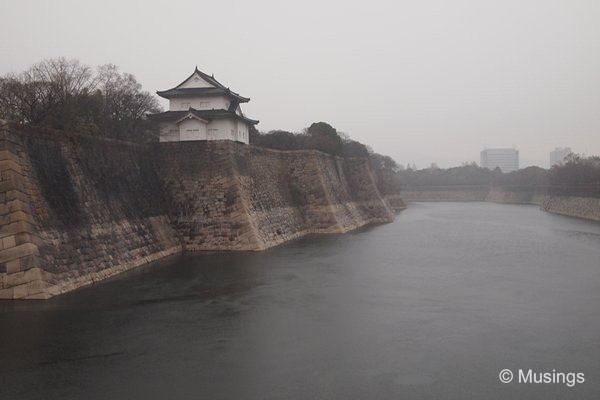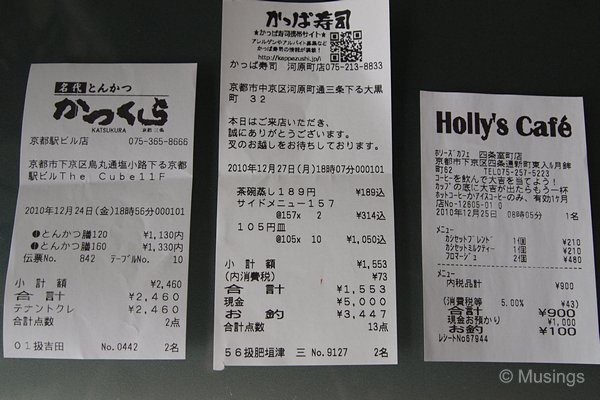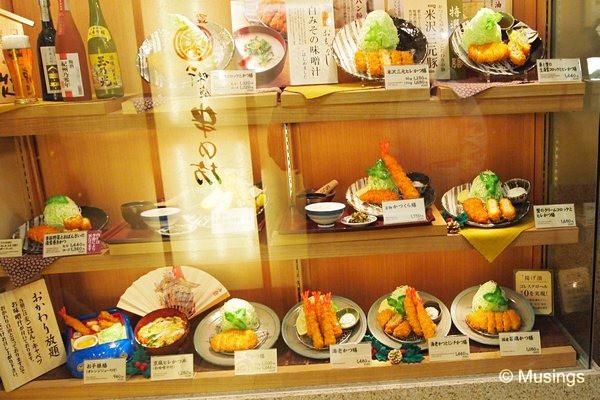Part 2 of our notes on our 10.5 day trip!
The Weather
We didn’t have much of a choice on when to go on vacation given the large number of limitations to accommodate: Ling’s academic calendar, my academic calendar – which was out of sync with hers – and when grandparents were available to take care of Hannah when we’re away. In fact, just 3 weeks before we left and after accommodation and flight plans had all been finalized, our sis-in-law remarked to us that it’s weird we’re visiting Western Honshu in December when this would had been the best month to visit.. Hokkaido instead LOL.
Still; I don’t mind winter nearly as much as Ling does. In fact, given a choice I’d always prefer to go to cold rather than warm places for a vacation. I get enough of the warmth and humidity already every day in this part of the world! The end-of-year we went was just about as good a time possible for the season; any later, e.g. next month, would have started to see heavy snowfall which might have seriously messed up our itinerary; and we got to see some remnants of autumn too.
Of the four cities we visited, we found Nara the coldest, and Kobe the most comfy in terms of temperature. We experienced fairly light snowfall too in Nara, Kyoto and Osaka; and the rain in Nara about destroyed our umbrella.

The Food
As remarked here at several spots already, there were no shortage of eating places in Japan. Every street we went or road we turned to, we’d find eateries and restaurants. Many of them were modest eateries where you’d walk-in, find yourself a common table, order, tuck-in, pay up and leave. But in terms of their national cuisine, this is as good as it gets. Short of the fine-dining Japanese establishments in Singapore, I don’t think the mid-price Japanese restaurants here can match what you can get in the origin country.
Interestingly, the price range for low to mid-level restaurants seemed pretty consistent. Ramen was routinely going for between 900 to 1200円, conveyor belt sushi between 100 to 140円 per plate, and normal sit-down meals at restaurants between 1000 to 1500円. Strangely, the low-price range eating places of about SGD8 are more expensive than Singapore since hawker and food court fare routinely go for SGD4 to SGD5, but the mid-price range eating places of about SGD12 to SGD20 in Japan is actually cheaper than its equivalent in Singapore. Conveyor belt sushi is for certain cheaper than Singapore. Weird. We didn’t try the fine-dining places.

Moreover, if you go with cuisine across ethnicity origins, the range of cuisine in the four cities didn’t nearly match what we get in Singapore. I guess it’s the benefit of being where we are; Singapore remains a melting pot for all races, and given our geographical location and history, continue to enjoy very well-done cuisine across so many types and price ranges.
As Ling’s remarked too, it’s also possible to find crappy food in Japan. And while her reference point is in a couple of ramen places we tried out, mine is in fast food. Fast food in Japan is as fast food anywhere else gets; it’s just bad. We tried out a couple of items at First Kitchen for instance and it tasted factory-churned out and not terrifically appetizing.
One thing we did like a lot in Japan is that many, many restaurants present static displays of their cuisine in their shop front. It helped Gaijin like us a lot who don’t read a word of Japanese, though there’s still that old adage that what you see is still routinely an idealized representation of what you (might) get. Still, eating out in Japan was an easy affair for us just following our P.E.P. protocol. Language wasn’t too much of a barrier for us. A couple of restaurants had English menus, and at least one waiter staff who could speak Mandarin.

Also, I especially liked the fact that the displayed prices you see in Japan restaurant menus is almost always the actual price you’d pay on the final bill. It’s better than what we get in Singapore restaurants where we have to calculate additional 10% charge for usually just barely adequate service + 7% GST, and loads easier than the IMO troublesome tipping system used in the United States, though you get excellent waiter service in return there.
Part 3 of our notes in the next post!
I’m a devout receipt fetishist when going on trips. I’m not sure why as I don’t subject them to any utility other than occasionally looking back at them and recalling scenes of my past adventures. When I articulate in that way it’s sort of pathetic, really!
It’s always my impulse to tip, even though the freedom of not having to worry about it when visiting other countries can be liberating. In the US, just tip 10 – 15% if the waiter was kind and attentive, roughly half that figure if their service was lacking in some small way, and nothing at all if you’re not too stuffed to run like hell.
Well, receipts are a fun way of keeping a record of what you’ve done and where you’ve been to – and they’re more meaningful when you go back on return trips next time to see what inflation does to you.:)